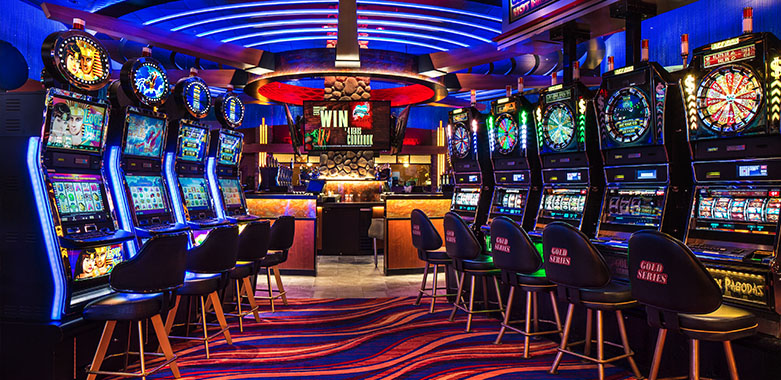
1xBet официальный сайт и зеркало
 Заголовок Заголовок |
▷ 1XBET ◁ |
|---|---|
 Промо код Промо код |
▷ 1XARPLAY ◁ |
 Приложение Android Приложение Android |
▷ 1xBet Скачать apk ◁ |
 Приложение Айфон Приложение Айфон |
▷ 1xBet Скачать iOS ◁ |
Платформа 1xBet начала свою деятельность в 2017 году и сумела быстро завоевать популярность среди игроков. Букмекерская контора предлагает разнообразные виды ставок, лучшие коэффициенты и обширную линию событий.

Для того чтобы убедиться в надежности и качестве услуг, потенциальным пользователям рекомендуется изучить положительные отзывы других игроков перед регистрацией на официальном сайте. Платформа предоставляет доступ к более чем 60 видам спорта и киберспорта, предлагает множество вариантов для размещения ставок, включая:
- Футбол
- Большой теннис
- Баскетбол
- Водное поло
- Большой теннис
- Гонки
Гостям доступны высокие кэфы, позволяющие рассчитывать на крупные выигрыши. Сайт букмекерской конторы 1 x Бет предоставляет простую и интуитивно понятную навигацию, что делает его доступным для игроков без опыта. Дизайн сайта выполнен в стильных бело-синих тонах, а адаптивность обеспечивает корректное отображение на различных устройствах. Сайт работает в следующих странах: Казахстан, Украина, Россия, Кыргызстан, Азербайджан, Молдова и многие другие!
Подробная информация про 1xBet
 Бренд Бренд |
1xBet |
 Официальный сайт Официальный сайт |
1xbet.com |
 Варианты обслуживания Варианты обслуживания |
Мобильная/браузерная версия, Приложения IOS, APK, PC |
 Компания Компания |
ООО «Реалбет» |
 Лицензия Лицензия |
Казахстан |
 Год основания в Казахстане Год основания в Казахстане |
2022 год |
 Язык Язык |
Русский, Казахский, Украинский, Киргизский, Английский, Узбекский |
 Телефон для связи Телефон для связи |
+7 771 800 9009 |
 Электронная почта Электронная почта |
[email protected] |
 Электронная почта Электронная почта |
Да, 24/7 |
 Букмекерская контора Букмекерская контора |
Есть |
В случае возникновения трудностей с входом в профиль или блокировки основного сайта, участники могут воспользоваться зеркалом 1xBet com. Реплика представляет собой точную копию основного ресурса, но имеет другой доменный адрес. Актуальные альтернативные ссылки часто публикуются:
- На официальном сайте
- На форумах, посвященных деятельности онлайн-клуба
- В мессенджерах или социальных сетях букмекера
Для поиска рабочей копии сайта гостям рекомендуется обратиться в службу технической поддержки. Операторы предоставят адрес зеркала на сейчас и помогут участникам разобраться с сайтом. Далее в обзоре разберемся с особенностями работы БК и привилегиями, которые предлагает платформа.
Способы регистрации – инструкция

Для регистрации в онлайн-клубе 1 xbet необходимо быть совершеннолетним посетителем. Новичкам следует зайти на сайт 1 x bet, кликнуть в хедере кнопку «Регистрация» и выбрать метод, которым гостю удобно создать профиль. Ниже, представлены данные, которые требуется указать при создании учетной записи в зависимости от установленного способа:

- 1 клик:
- Страна, в которой проживает новичок
- Валюта счета
- Бонус-код

- По телефону:
- Номер мобильного и код для подтверждения
- Валюта и промокод
Кроме того, при создании аккаунта пользователи должны выбрать приветственное вознаграждение и пройти капчу. Обязательным требованием является принятие лицензионного соглашения. Если возникнут вопросы, гости могут обратиться к операторам службы техподдержки для получения консультации.
Важно отметить, что учетные записи, созданные с нарушением требований, мультиаккаунты и профили, в которых использовались чужие личные данные, будут заблокированы, включая средства на счету. Проверка всех данных, вписанных в профиле и во время его создания проводится путем верификации.
Бонусы 1хБет

Бонусная программа казино 1x bet предлагает игрокам разнообразные поощрения, помогающие начать ставки без вложений, разнообразить игровой процесс и повысить шансы на успех. Бонусы начисляются регулярно или могут иметь временный характер.
Описание правил получения призов доступны в разделе «Акции» на официальном сайте 1xbet. В случае, если игрок выполнил необходимые условия, но бонус не появился в личном кабинете, рекомендуется обратиться в техподдержку для уточнения ситуации.
Новички, зарегистрировавшиеся на платформе и внесшие первый депозит, могут воспользоваться приветственным бонусом. Это поощрение сразу начисляется на баланс после того как участник выполнил требования, которые прописывает БК. В рамках приветственного поощрения новым участникам доступен 100% бонус на сумму первого депозита, не превышающего 13000 рублей.
Чтобы получить поощрение пользователям нужно выбрать его во время создания профиля. Если посетитель не желает воспользоваться этим предложением, он также может отказаться от бонуса при заполнении регистрационной формы.
На платформе onexBet ассортимент акций постоянно обновляется, предоставляя пользователям доступ к разнообразным бонусам и поощрениям. Рассмотрим популярные бонусы в таблице.
| Бонусы на день рождения | Начисляются верифицированным именинникам в индивидуальном порядке |
| Календарь кибер-бонусов | Возможность получить дополнительные подарки для пари на киберспортивные события |
| Витрина промокодов | Фрибеты для разных спортивных событий после активации промокодов |
| Доверительные ставки и 100% страховки | Повышают уверенность игроков в том, что даже в случае не совсем успешной игры, они не теряют крупные суммы |
| Экспресс дня | Предоставляет дополнительные 10% к итоговому коэффициенту экспресс-ставок |
Часто, подарки связаны с масштабными событиями, такими как чемпионат мира по хоккею/футболу или крупные соревнования в мире CS 2 / Дота 2. Для того чтобы всегда быть в курсе актуальных бонусов и принимать участие в проводимых акциях, стоит подписаться на рассылку платформы.
Пополнение и вывод средств 1xbet

Для начала ставок на площадке, участникам необходимо пополнить счет с использованием удобной платежной системы. Важно отметить, что платформа не взимает комиссию за проведение платежей и обеспечивает стабильные, конфиденциальные и быстрые транзакции, предоставляя игрокам из России быстрый доступ ко всем событиям. Всего платформа поддерживает более 40 методов проведения платежей, а в таблице разберем лимиты.
| Способ транзакции | Время на депозит | Скорость выплаты | Минимальное пополнение |
| Карты банка | Моментально | 1-5 дней | 100 рублей |
| Jeton Wallet, Perfect Money, Скрилл, ecoPayz, direct Debit | Менее суток | ||
| Криптовалюта | Около 10 минут | ||
| Flexepin | — |
Онлайн-клуб также не начисляет комиссию при проведении выплаты выигрышей. Ускорить процедуру можно применяя тот же метод для выплаты, который использовался при пополнении баланса. Минимальная сумма запроса на вывод составляет 100 рублей. Проводить платежи гости могут со смартфонов и планшетов, а особенности разберем в таблице ниже.

| Мобильная версия | Адаптивный формат площадки 1xBet представляет собой версию официального сайта, которая автоматически подстраивается под размер экрана устройства. Для доступа к мобильной версии пользователь должен ввести адрес конторы в поисковой строке браузера своего телефона. Создавать учетную запись еще раз не нужно, ведь авторизации достаточно для начала заключения пари. |
| Скачивание приложение | БК также предоставляет гостям приложение, которое предлагается скачать на телефоны и планшеты Android и iOS. Гостям нужно загрузить 1xbet APK-файл, а затем завершить инсталляцию, следуя инструкциям. ПО не требует много места на устройстве, не перегружает и не потребляет большой объем интернет-трафика. Игрокам, использующим приложение, предоставляется доступ ко всем функциям ресурса, включая betting на спортивные и киберспортивные события, управление аккаунтом и бонусами, пополнение счета и вывод выигрышей. |
Популярные линии в 1xBet

Платформа 1xBet предоставляет пользователям обширный выбор дисциплин и более 1100 событий каждый день. На ресурсе доступно более 60 видов sports, позволяя игрокам заключать пари в пользу любимой команды и следить за ходом игры. Посетителям также предоставляется возможность участвовать в ТОТО:
- Пятнашка
- Точный счет
Онлайн-клуб 1xBet выделяется лучшими коэффициентами как на не самые известные, так и популярные виды спорта. Кроме того, букмекер предлагает широкий спектр линий и доступ к экзотическим дисциплинам.
Виды ставок, предлагаемых на платформе, включают в себя классические варианты, такие как пари на победу команды, гандикапы, тоталы и форы, а также специфические ставки, такие как автор гола, пенальти, количество аутов и другие альтернативные исходы. Онлайн-клуб также предлагает разнообразные виды ставок на киберспорт, включая последние матчи по:
- CS 2
- Дота 2
- Valorant
- Старкрафт
- Overwatch
Размещение ставок на 1xBet осуществляется как до начала события, так и в режиме прямых трансляций. Зарегистрированные участники могут выбирать события, следить за коэффициентами и размещать ставки, используя простой и интуитивно понятный интерфейс платформы.
Другие продукты от 1хБет
Помимо пари на спортивные матчи и киберспортивные события БК предлагает пользователям большой выбор азартных развлечений в онлайн-казино. Участникам доступны новые игровые автоматы, игры с покупкой бонусов, настолки и карточные игры, которые функционируют на сертифицированных ГСЧ.
Посетители могут запускать любимые развлечения как в бесплатном режиме, так и формате на деньги. Самостоятельным разделом в онлайн-клубе является лайв-казино, предлагающее играть в:
- Рулетки
- Баккара
- Сик Бо
- Блэкджек
- Покер
Игры проводит профессиональный живой ведущий, который находится в настоящем наземном казино или комнате, специально оборудованной под лайв казино. Участники могут следить за действиями дилера и общаться с ним. Помимо этих развлечений, стоит также отметить разделы, которые разберем в таблице ниже.
| Категория | Особенности |
 1xGames 1xGames |
Здесь пользователи найдут большой выбор развлечений, которые отличаются красочностью, детализацией, имеют уникальную механику и технические характеристики. |
 TV игры TV игры |
Развлечения, которые проводит живой ведущий и имитирующие лотереи и другие игры с билетами. |
 Тото Тото |
Категория, где участникам предлагаются ставки на точный счет, хоккей, футбол, баскетбол. Они предусматривают ставку на целый список событий. |
 Бинго Бинго |
Популярная игра, которая имеет простейшие правила, но при этом позволяет гостям получить крупные выигрыши. Представлена как в Live формате, так и версии без депозита. |
FAQ

















Сайт подарил мне массу эмоций я просто рад что нашел 1 икс спс ему .
Сайт можно сказать, просто топчик, много всего и все годно, я его обожаю, лучший 1 икс бет
Всем советую 1xbet aviator, очень круто!!!
1xbet aviator самое лутшое казино советую всем скачать его вы не пожалеете
1xbet aviator
1 x bet лучший даёт возможность
1х Бет самая лучшая букмекерская контора, давно пользуюсь, очень советую
Будет намного лучше чем столото
Топ букмейкер
1ХБЕТ ИМБА, всем советую, поднял бабла